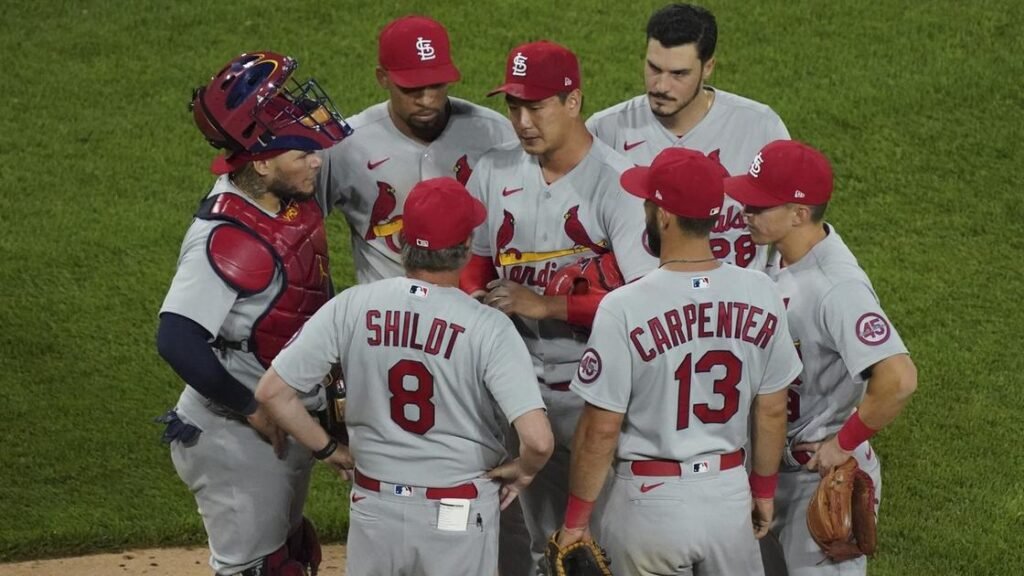The anxiety in the crowded stadium was evident under the sparkling lights. The bases loaded, the game was tied, and it the ninth inning. The manager headed to the mound for an important discussion while the pitcher dabbed at the perspiration on his brow. Baseball fans familiar with this image, but it has new meaning since MVR (Mound Visits Remaining) restrictions implemented. This is the tale of how MVR baseball transformed the sport by introducing a stratagem and thrill that has enthralled players and spectators in equal measure.
Growing up, young athletes in Cooperstown, New York—home of the Baseball Hall of Fame—dreamed of playing in the major leagues. Jake was one of them; he was a promising pitcher with a strong arm and a good sense of the game. As Jake advanced through the ranks, he soon saw that baseball was changing. Every mound visit given weight due to the application of MVR rules, which affected not only the final result but also the overall strategy of the game.
This new dynamic followed Jake from the minors until his major league debut. Both players and coaches had to adjust and learn how to make each visit matter. Jake felt the weight of those few major league appearances as he took the mound in his debut game. Like many other stories, his experience demonstrates how MVR baseball has changed the face of America’s favorite pastime. We examine the history, significance, and statistics supporting the efficacy of MVR baseball as we delve into its complexities in this extensive tutorial.
Comprehending MVR Baseball
Major League Baseball (MLB) has imposed a rule known as Mound Visits Remaining (MVR) that restricts the amount of times coaches, managers, and players can visit the pitcher’s mound during a game. Concerned about the lengthening of baseball games, the regulation was introduced 2018 with the intention of accelerating play shortening games.

The MVR Baseball Rules
A team may visit the mound a maximum of five times in a nine-inning game under the MVR rule. Teams allowed one extra mound visit per extra inning if a game goes into extra innings. Any visit to the mound by a manager, coach, or player to speak with the pitcher referred to as a “mound visit,” with the following exceptions:
Visits brought on by an offensive replacement
visits made prior to the commencement of the at-bat but following the announcement of an offensive substitution
Position players visiting to clean their spikes during bad weather
visits by the catcher following a disagreement with the pitcher to talk about signs
These exclusions guarantee that player safety and crucial strategic elements of the game not jeopardized by the rule.
MVR’s effects on game strategy
Game strategy has been greatly altered the addition of MVR, necessitating managers players to visit mounds more sparingly. There are numerous strategic ramifications:
Pitcher-Catcher Communication: In order to get through crucial situations, pitchers and catchers need to be more in sync with one another. They frequently rely on pre-game planning and nonverbal cues.
Bullpen Management: Given the few opportunities to visit the mound and make modifications, managers need to exercise caution when managing their bullpen.
Game Pacing: The regulation has successfully shortened games’ lengths, in line with MLB’s objective of improving the sport’s viewer appeal.
A Statistical Examination of MVR’s Efficiency
We examine a number of game indicators both before and after MVR implemented in order to assess its efficacy. Key statistics from the MLB seasons of 2017 (pre-MVR) and 2018 (post-MVR) compiled in the table below.
Table 1: MLB Game Metrics Comparison (2017 vs. 2018)
| Metric | 2017 Season (Pre-MVR) | 2018 Season (Post-MVR) |
|---|---|---|
| Average Game Duration | 3 hours, 5 minutes | 3 hours, 2 minutes |
| Total Mound Visits | 10,552 | 8,324 |
| Average Mound Visits per Game | 6.25 | 4.92 |
| Total Pitching Changes | 15,820 | 14,473 |
| Average Pitching Changes per Game | 2.76 | 2.58 |
Practical Illustrations and Case Studies
The strategic significance of MVR has demonstrated in a number of well-known games. Game 3 of the 2018 World Series between the Boston Red Sox and the Los Angeles Dodgers is one noteworthy instance. Throughout the eighteen-inning contest, managers Dave Roberts and Alex Cora carefully controlled their mound visits, saving them for pivotal times and demonstrating the fine balance demanded by the new regulations.
Benefits of MVR Baseball: Enhanced Game Flow The MVR rule helps keep play moving along at a constant pace, which increases spectator engagement during games by restricting needless mound trips.
Enhanced Strategic Depth: The game becomes more challenging and exciting as managers and players must modify their strategy.
Engagement of the Audience: Games that are shorter and more exciting are likely to draw and hold a larger crowd, which will increase the sport’s appeal and income.
Obstacles and Remarks
The MVR rule has faced some difficulties and critiques, despite its general success:
Initial Adjustment Period: It took some time for coaches and players to become used to the new regulation, which occasionally resulted in misunderstandings and tactical errors.
Possibility of Miscommunication: Fewer trips to the mound raise the possibility of misunderstandings between pitchers and catchers, which could have an effect on output.
Traditionalists’ Criticism: According to some baseball purists, the regulation distorts the game’s traditional flow and strategy, taking away from its fundamental elements.
Frequently Asked Questions (FAQs) 1. In baseball, what is MVR?
Mound Visits Remaining, or MVR for short, is the rule that caps the amount of times a pitcher may visit the mound throughout a game.
- Why did the MVR rule come into effect?
The MVR rule implemented to shorten games and quicken play, increasing audience appeal for baseball. - According to the MVR rule, how many mound visits are permitted?
In a nine-inning game, each side permitted a maximum of five mound visits; an extra visit permitted for each extra inning. - Are there any MVR rule exclusions for mound visits?
Visits for injury checks, offensive substitutions, weather-related concerns, and cross-talk between the pitcher and catcher are among the exceptions. - How has game strategy been affected by the MVR rule?
The rule has given the game greater strategic depth by emphasizing the need of bullpen management and pitcher-catcher communication.
6.Is the game duration shorter due to the MVR rule?
Indeed, data indicates that the average game length has somewhat decreased since the MVR rule put into place.
- What difficulties does the MVR rule bring with it?
The difficulties include a time of initial acclimatization for coaches and players, possible misunderstandings, and opposition from traditionalists.
8.Is it possible for a manager to visit the mound for an injury check?
Indeed, trips made to inquire about a possible injury are free from the MVR cap.
- How are mound visit limitations affected by more innings?
For every additional inning played, teams granted one extra mound visit. - How has the MVR rule been received generally?
Though there has been some pushback from traditionalists and the need for teams to make modifications, overall, the regulation has favorably welcomed.
Conclusion
MVR baseball has brought in a noteworthy and tactical advancement in the sport. MLB has effectively sped up play by restricting mound visits, making the game more exciting and dynamic for both players and spectators. The statistical evidence demonstrates the influence of the MVR rule on game length and strategic depth, hence corroborating its usefulness.


